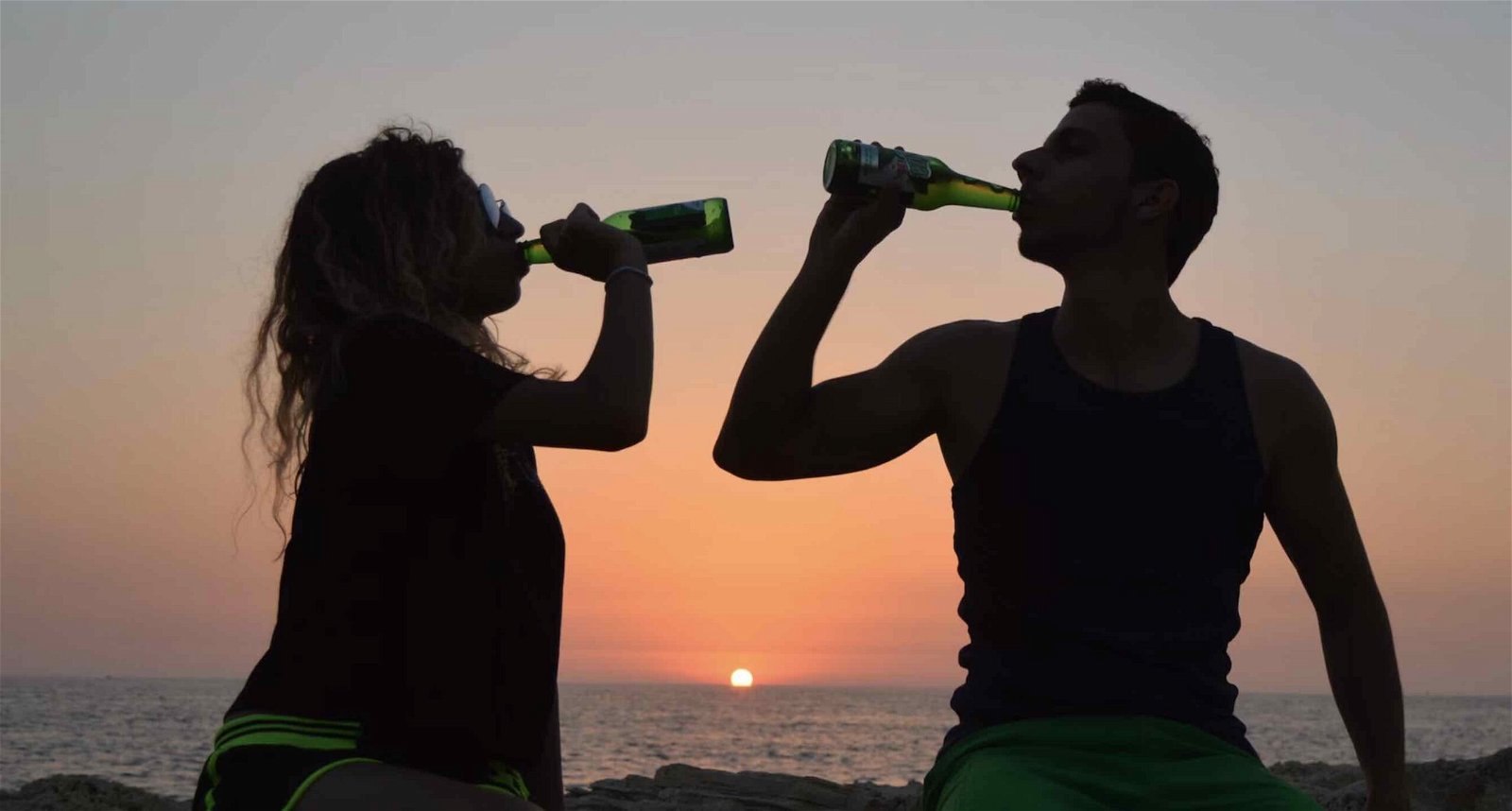Contrary to popular belief, recent research says the notion of “beer goggles”—wherein alcohol consumption alters our perception of physical attractiveness— may not be a thing.
According to a new study published in the Journal of Studies on Alcohol and Drugs, alcohol doesn’t change how we see someone’s physical attractiveness. Whether drunk or sober, we perceive attractiveness the same way. However, does intoxication lower inhibitions, making one more likely to approach someone they already find appealing.
These results suggest that rather than causing “beer goggles,” alcohol promotes “liquid courage” or amplifies existing attractions rather than creating new ones.
These findings debunk a longstanding myth about “beer goggles” and provide a deeper understanding of the complex relationship between alcohol and social behaviors.
This insight is not only important from a scientific standpoint but can also help equip therapists, counselors, and the general public to navigate risky behaviors stemming from alcohol consumption.
“It is important to understand alcohol’s effects on social experiences, as it helps to clarify why some people find alcohol rewarding and why alcohol can contribute to negative social consequences (e.g., saying something you regret the next day or something more serious, like risky sex),” lead study author and postdoctoral research fellow at the Stanford Prevention Research Center, Dr. Molly A. Bowdring, told PsyPost.
Historically, the consensus on alcohol’s role in skewing perceptions of attractiveness has been anything but clear-cut.
Some studies have found that individuals consuming alcohol report higher perceptions of physical attractiveness than those not drinking. This effect is colloquially referred to as “beer goggles” and is often used as an excuse for engaging with someone one’s peers deem unattractive.
However, a meta-analysis of past research affirming “beer goggles” reveals a surprisingly small association between alcohol and the perception of physical attractiveness, leading researchers to consider if results were influenced by “suboptimally designed studies.”


Critically, past experimental tests have been primarily limited to studying people drinking alcohol in a lab alone. Dr. Dowdring notes, “This diverges significantly from the social drinking experiences that most people who participate in these studies are used to and has limited our understanding of alcohol’s effects on social experiences.”
Recognizing the need for clarity, Dr. Bowdring and study co-author Dr. Michael Sayette, a professor of Psychology and Psychiatry at the University of Pittsburgh, decided to conduct a comprehensive experiment to demystify the relationship between alcohol and attractiveness perception.
For the study, 36 young adults in their early twenties were paired with friends they frequently drank with. Over two sessions, participants were given alcoholic and non-alcoholic beverages in randomized order.
Participants’ blood alcohol concentrations were carefully measured during the drinking sessions, and each was assessed on the average quantity of alcohol they consumed weekly and the length of time they had known their drinking partner. The participants also rated their feelings of closeness with their drinking buddies on a scale from 0 (not at all close) to 10 (very close).
Participants later rated images and short clips of 16 individuals based on perceived attractiveness without any knowledge about the kind of beverage consumed.
Intriguingly, results seemingly debunked the myth of “beer goggles” and revealed that alcohol didn’t make participants view people as more or less attractive than when sober. However, those under the influence were likelier to pick the more attractive individuals to interact with.
“Our findings with PPA [perception of physical attractiveness] ratings did not detect effects of alcohol. Neither [the] perceiver nor [the] target drink condition influenced PPA ratings. Nor did sexual-orientation match, target expressiveness, target motion, and perceiver alcohol expectancies moderate the alcohol–PPA relation,” researchers wrote.
“In contrast to our findings with traditional attractiveness ratings, we observed a significant effect of alcohol on selection to interact with more attractive targets. After consuming alcohol, participants were more likely to prefer to interact with the most attractive targets than they were after having consumed control beverages.”
Given the broader scientific and societal implications, it’s worth delving into related research on alcohol and social behavior. For instance, past research has indicated a connection between alcohol consumption and increased sexual risk behavior.
Such risky behavior might not arise merely from altered perceptions but also from heightened motivations and reduced inhibitions, aligning with the researcher’s recent findings.
This “liquid courage” phenomenon, where alcohol serves as a facilitator rather than providing perceptual distortion, is also resonated in 2007 research published in the journal AIDS and Behavior. This study found that alcohol’s impact may lie more in its ability to attenuate or counteract fear or anxiety, leading individuals to engage in sexual risk-taking they would usually suppress when sober.
While this new study challenges the idea of “beer goggles,” researchers caution that there are limitations, preventing the results from being seen as conclusive for widespread application.
A modest sample size, an abrupt end due to the COVID-19 outbreak, and a predominant focus on heterosexual individuals mean that the door is wide open for more expansive and diverse research in the future.
“We hope the present finding that alcohol led to selecting more attractive targets stimulates methods in alcohol–PPA studies involving more diverse samples of perceivers and targets (e.g., in terms of gender, sexual orientation, race/ethnicity, drinking history) that permit actual approach behaviors toward attractive targets (e.g., initiating conversation),” study authors wrote.
“Future research that incorporates even more realism, by, for example, setting up real opportunities for participants to interact, should get us closer to better understanding how these processes play out in natural drinking experiences,” added Dr. Dowdring.
For now, the indications are that alcohol doesn’t equip us with “beer goggles” but instead arms us with a dose of “liquid courage.”
Researchers believe recognizing this distinction is vital, especially when navigating the intricate social interactions fueled by a few drinks.
“It’s useful to be aware that alcohol can alter our social goals and motivations,” Dr. Bowdring said. “Considering goals for social interactions and recognizing that alcohol may alter these interactions (in ways that can end up being harmful) can be helpful prior to entering a social setting where alcohol may be consumed.”
Tim McMillan is a retired law enforcement executive, investigative reporter and co-founder of The Debrief. His writing typically focuses on defense, national security, the Intelligence Community and topics related to psychology. You can follow Tim on Twitter: @LtTimMcMillan. Tim can be reached by email: tim@thedebrief.org or through encrypted email: LtTimMcMillan@protonmail.com

